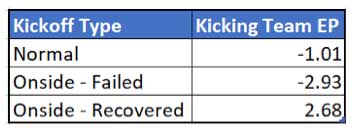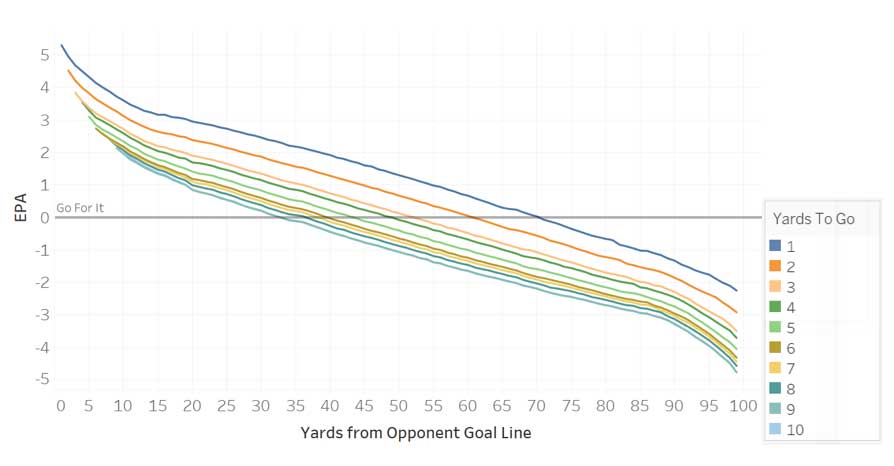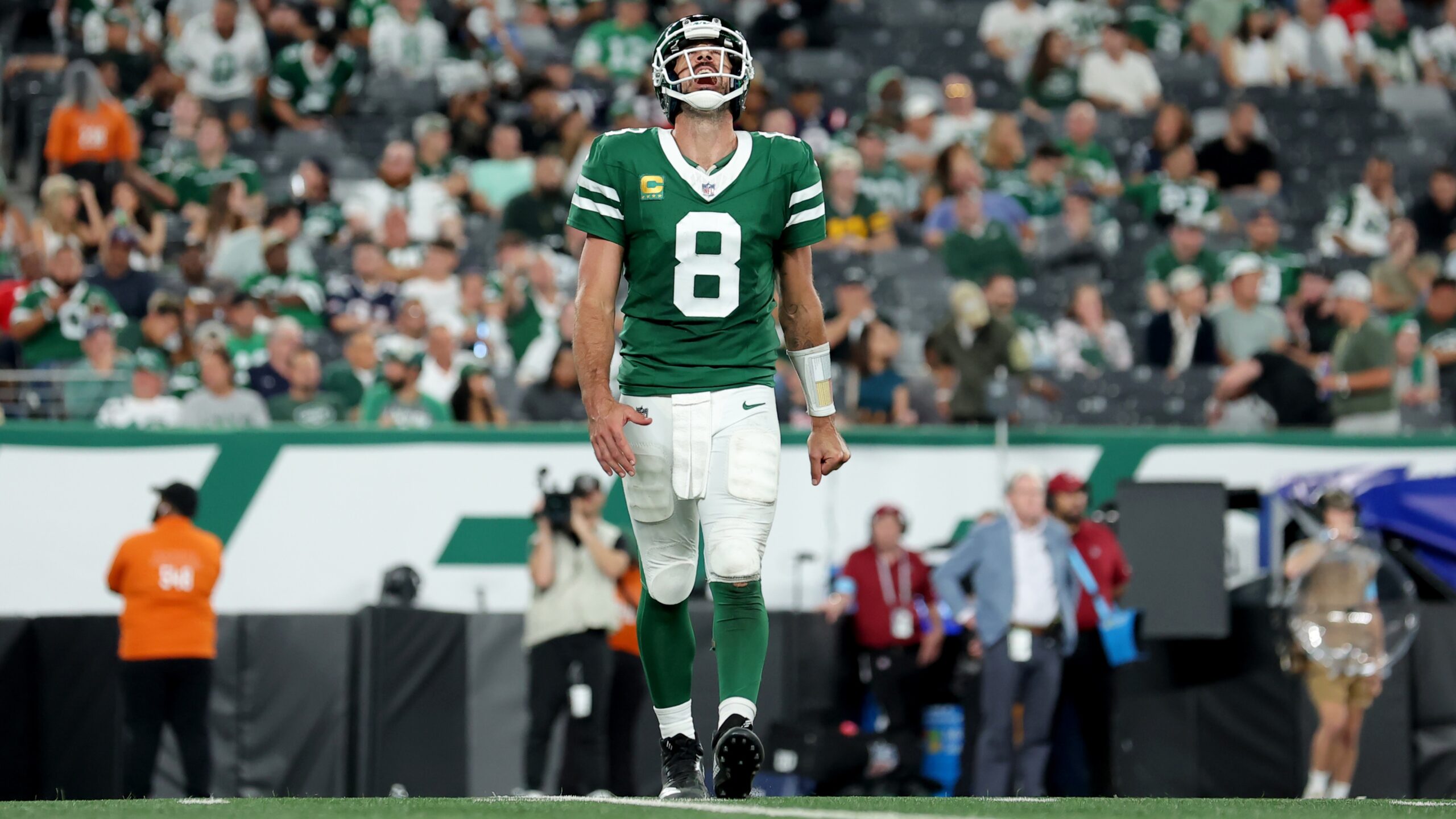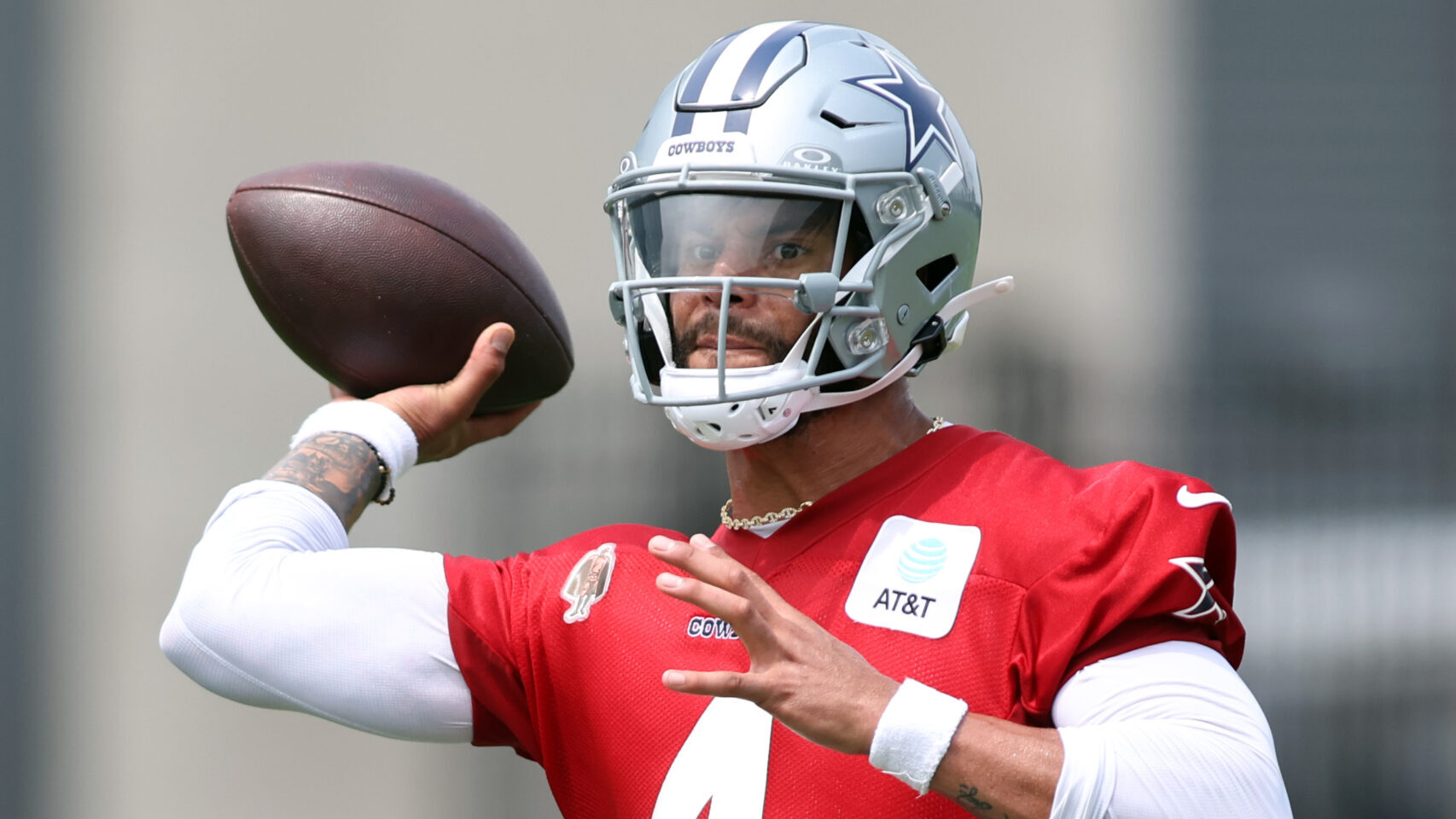Analysis
5/24/21
6 min read
The Analytics Behind One Coach's Very Aggressive Tactics
The new Presbyterian College football coach, Kevin Kelley, won nine Arkansas high school state championships using a unique strategy. His teams, which compiled a 216-29-1 record, almost never punted the ball and always tried onside kicks – unless they were up by 21 points or more. Now that he has graduated to the college level, Kelley plans to continue this aggressive special teams strategy and claims he is more afraid of other coaches copying his methods than he is of failing.
As Kelley enters the college ranks, he has already garnered the attention of Bill Belichick. Following is a breakdown of the numbers behind gaining an advantage from onside kicks and when are the best situations to go for it on fourth down. This research uses the concept of Expected Points (EP) and Expected Points Added (EPA). An EPA refresher can be found here.
Onside Kick
While being aggressive on fourth down has become more widely accepted, even adopted by NFL teams like the Baltimore Ravens, it is extremely rare to see an onside kick outside the final minutes of the fourth quarter. Due to new rules regarding onside kick formations, the recovery rate in the NFL has fallen to just over 8%, leaving very little incentive for teams to try this unconventional play. In college football, however, onside kicks were successfully recovered by the kicking team 23.8% of the time between 2014-2020. This sizable increase indicates that there could be some opportunity for a forward-thinking coach to use this strategy to his advantage.
But just how often would a college football team need to recover an onside kick to gain an edge over its opponent?
The new NCAA kickoff rule, instituted in 2018, allows for the receiving team to call for a fair catch within the field of play and automatically advance the ball to the 25-yard line. Because of this rule, when employing a normal kickoff, the receiving team starts their drive on average at their own 26-yard line. Starting first-and-10 at their own 26 gives the team 1.01 Expected Points (EP), meaning a team with that starting field position scores on average around 1 point per drive.
A failed onside kick attempt gives the opponent the ball on average at the kicking team’s 47-yard line, a field position increase of 27 yards, and increases the opponent’s EP to 2.93. On the other hand, a successful onside kick on average gives the kicking team the ball on their own 49-yard line, giving the kicking team 2.68 EP.
If the onside kick is unsuccessful, the amount of EP given up is the difference between the opponent’s EP from a failed onside kick and what they would have gotten if a normal kickoff was attempted, or 2.93 – 1.01 = 1.92 EP given up. The amount of EP gained from a successful onside kick is the difference in the kicking team’s EP from recovery and the EP of the opposing team from failure, or 2.68 – (-2.93) = 5.61 EP gained.
Using Expected Points, a successful onside kick is worth over 5 points, while an unsuccessful onside kick is less than a 2-point deficit. Some quick algebra reveals that a college team would have to successfully recover an onside kick on 25.6% of attempts to gain a statistical advantage. This number is slightly above the 23.8% of onside kicks that were successful between 2014-2020, which is why there are not currently any Div. I football teams who employ this strategy.
While teams currently are not recovering onside kicks at the necessary rate, this may be due to a lack of practice time. Special teams can be a small portion of a team’s practice schedule, and the onside kick an even smaller percentage. If a team were to dedicate the majority of their special teams time to recovering onside kicks, it is reasonable to think they could close the 1.8% gap in recovery rate and make consistent onside kicks a viable strategy.
An added benefit to this approach is that opposing teams would have to dedicate a significant portion of their practice to preparing for onside kicks, which gives them less time to prepare for the team’s offensive and defensive game plan.
Going for it on fourth down
A portion of Coach Kelley’s strategy that has been more widely studied is the decision to go for it on fourth down. Lane Kiffin, the head coach at Ole Miss, was particularly aggressive in his fourth down decision-making last season after employing an analytics staff, and many college coaches are following suit.
Again using EPA, the benefit from going for it on fourth down can be assessed. From fourth-and-1 to fourth-and-10, the percent chance of converting was calculated, using the percent of successful third- and fourth-down conversions from all Div. I games from 2014-2020. Then, the expected points that would be gained from a successful attempt and those given up from an unsuccessful attempt were both calculated.
The percent chance of a successful conversion was then multiplied by the EPA for a conversion, and the EPA lost by failing to convert was multiplied by the chance of failure. These two values were added together to get the overall EPA gained by going for it on fourth down. If the EPA is positive, it is advantageous for the team to go for it, while a negative EPA would not be advisable.
As the team gets closer to the goal line, it makes more sense to go for it, as the opposing team would get the ball in unfavorable field position should the conversion fail. The results can be seen in the chart below, with values above the line having a positive EPA when attempting the fourth-down conversion.
While always going for it on fourth down is not advisable, the analytics suggest coaches should be more aggressive in their decision-making. Past the 50-yard line, coaches are encouraged to go for it on fourth-and-3 or less, and there is a growing trend of more analytics-minded coaches using these numbers to their advantage.
Conclusion
When looking at the stats, Kelley’s strategies may not be as far-fetched as they first appear. If he can prove that his team can successfully recover onside kicks more than a quarter of the time, there may be other college coaches following in his footsteps. Analytics is continuing to change the way the game is played, with more coaches willing to take risks. This could result in a much more entertaining game. One thing is for sure, a lot more people will be watching Presbyterian College this fall.









